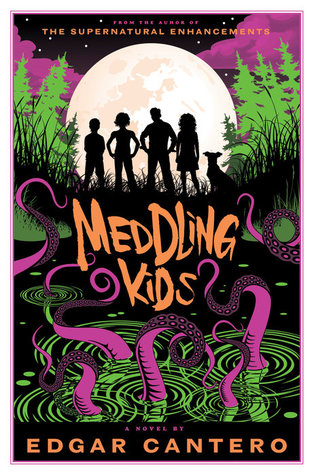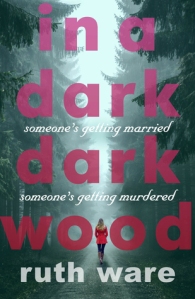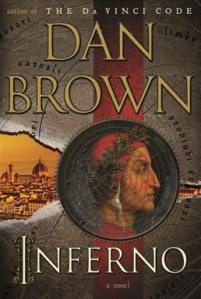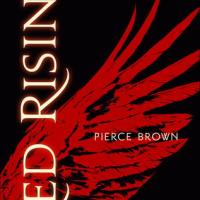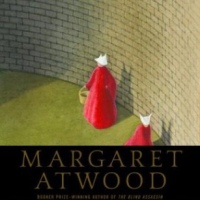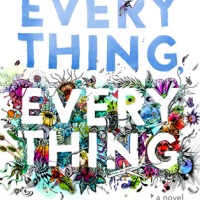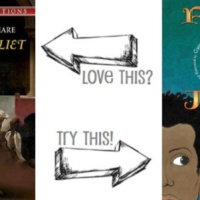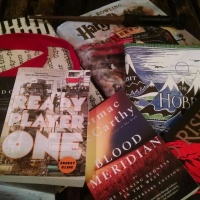I’ve read all of Dan Brown’s Robert Langdon Series. I don’t usually consider them to be high literature (said with a smarmy expression while adjusting an invisible monocle), but some of them I have considered a downright good time. In fact, I thought Inferno was very entertaining, like a literary scavenger hunt! Some of Brown’s novels, though, are more successful in my esteem than others, and upon finishing his most recent novel, Origin, I wasn’t sure how I felt about it. You know what to do!! When in doubt, hash it out (via pros and cons, my favorite review process)!
But first, this obscenely long blurb from Goodreads:
Robert Langdon, Harvard professor of symbology and religious iconology, arrives at the ultramodern Guggenheim Museum in Bilbao to attend a major announcement—the unveiling of a discovery that “will change the face of science forever.” The evening’s host is Edmond Kirsch, a forty-year-old billionaire and futurist whose dazzling high-tech inventions and audacious predictions have made him a renowned global figure. Kirsch, who was one of Langdon’s first students at Harvard two decades earlier, is about to reveal an astonishing breakthrough . . . one that will answer two of the fundamental questions of human existence.
As the event begins, Langdon and several hundred guests find themselves captivated by an utterly original presentation, which Langdon realizes will be far more controversial than he ever imagined. But the meticulously orchestrated evening suddenly erupts into chaos, and Kirsch’s precious discovery teeters on the brink of being lost forever. Reeling and facing an imminent threat, Langdon is forced into a desperate bid to escape Bilbao. With him is Ambra Vidal, the elegant museum director who worked with Kirsch to stage the provocative event. Together they flee to Barcelona on a perilous quest to locate a cryptic password that will unlock Kirsch’s secret.
Navigating the dark corridors of hidden history and extreme religion, Langdon and Vidal must evade a tormented enemy whose all-knowing power seems to emanate from Spain’s Royal Palace itself… and who will stop at nothing to silence Edmond Kirsch. On a trail marked by modern art and enigmatic symbols, Langdon and Vidal uncover clues that ultimately bring them face-to-face with Kirsch’s shocking discovery… and the breathtaking truth that has long eluded us.
Now, to weigh out the Pros and Cons to decide if I liked this novel:
PRO: Robert Langdon. I like the character of Robert Langdon, the Harvard professor who keeps finding himself in mess after life-threatening mess. His knowledge is obscure but somehow repeatedly pivotal to saving the world. Maybe more of us should be Symbologists, just so we don’t have to rely on Robert Langdon so hard and so often. Regardless, the small touches, like the claustrophobia and the Micky Mouse watch, make Langdon likable and slightly more believable.
CON: These novels are intended, I believe, to be able to stand alone from the series as a whole, meaning you could easily read Origin as your first Brown novel and not lack any information. In a way, I think this is a good thing, but also, it’s unrealistic af!! Throughout the series, Langdon has been THROUGH IT! This man has been kidnapped, he’s been pursued by police and criminals, he’s been chased through inaccessible historical monuments, and his life has been threatened innumerable times in innumerable ways. So you’re telling me that he wouldn’t learn from these experiences?? He’s just following anonymous instructions and trusting people like he doesn’t know better?? I can’t get on board with that. He would (understandably) have PTSD by now and would be way more cautious.
PRO: Artificial Intelligence plays a big part in this novel. In fact, I’d say the AI is one of the main characters. The way “he” is portrayed feels a bit unrealistic at times, but the point of the novel is that one man has contributed to the advancement of technology in ways we didn’t think were possible, so I was willing to buy into it. The AI is often likable, helpful, suspicious, and all other human-like characteristics.
CON: I figured out the “bad guy” pretty early. There were a few loose ends that eluded me until the end, but overall, I assumed relatively early on who was orchestrating all the evil. I vastly prefer a novel that keeps me in the dark the whole time, or even misdirects my attention. The ending still managed to be something of a surprise, but once I figured out the major instigator, I lost a bit of interest.
CON: Each novel in the series focuses on a different “search” and they’ve all set up organized religion as the ultimate bad guy in one way or another. Origin is no different. However, instead of analyzing historical locations or documents, Origin predicts scientific advancements and the repercussions such revelations would have on the religious community. At this point, I was still on board, but quite often, the text dives into the science of potential origin theories, advanced technology, and more, and it flew right over my head. Brown tried to talk down to me, but I was apparently further “down” than he anticipated.
PRO: New City – New Google Search History! I am now somewhat acquainted with Bilbao, Spain. As always, I can’t read a Dan Brown novel without having WIFI, since it lists a million pieces of art or landmarks that I feel compelled to research. For instance, have you seen the Tree of Life monument outside the Dohany Synagogue in Budapest? I can’t believe this is the first time in my Holocaust-researching-life that I’ve heard about it. I learn a lot from reading these novels. I think that PRO counts for double.
CON: Same as above. I love that I learn from these, but it almost makes it impossible for me to read the novel when I don’t have access to internet. In fact, at one point I had to mark a few pages so I could go back to them in order to Google something when I got home later. It’s an overload of information sometimes.
CON: I lost interest well before the ending. It took me almost a month to read this book. Yes, it’s almost 500 pages, but still. That’s too long to read that much. I just got bored. There was a great deal of science-talk within the last 50 pages and since it was flying right over my head, I lost motivation to keep reading.
PRO: I guess there’s the potential for another Tom Hanks movie?? Have they made all the other ones? I saw “The Da Vinci Code” and maybe “Angels and Demons” once, but did they make the others? I feel like Inferno would make a great addition to the franchise, but Origin might be a little too… thought-heavy. Nobody likes to think!!
I wrote more CONS than PROS, but I really do think they balance out. This wasn’t Brown’s best, but I don’t guess I regret reading it. I imagine I’ll forget all the details in no time at all.
Have you read it? Did you like it? Do you typically like Dan Brown novels?


